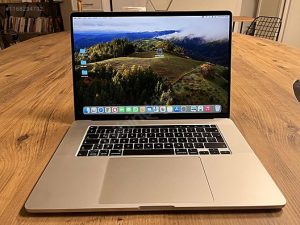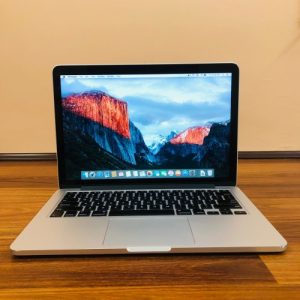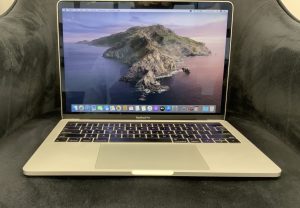Introduction
The MacBook Pro has long been the gold standard for creative professionals and power users. With the 2023/2024 refresh, Apple brings in its M3 chip lineup—M3, M3 Pro, and M3 Max—across 14- and 16-inch models. The big promise? More power, more efficiency, and better graphics, especially for those pushing their machines with video editing, code compiling, 3D work, and more.
 But what does that mean in everyday use? And is it worth the upgrade from an M1 or Intel Mac? Let’s dig in.
But what does that mean in everyday use? And is it worth the upgrade from an M1 or Intel Mac? Let’s dig in.⸻
Section 1: Model Overview
You have three chip options and two screen sizes:
Chips:
•M3 (14-inch only) – Entry-level Pro with fanless design
•M3 Pro – More cores, better for multitasking and pro workflows
•M3 Max – Absolute beast for 3D, AI, and video production
Display Sizes:
•14.2-inch Liquid Retina XDR
•16.2-inch Liquid Retina XDR
All models feature mini-LED displays with 120Hz ProMotion, HDR support, and true blacks—same excellent panels introduced in the M1 Pro/Max era.
⸻
Section 2: Design and Build
 No major redesign here—and that’s a good thing. The aluminum chassis is still:
No major redesign here—and that’s a good thing. The aluminum chassis is still:•Rigid and premium
•Sleek but not ultra-thin
•Available in Silver, Space Gray, and Space Black (M3 Pro/Max only)
The Space Black finish is fingerprint-resistant and looks stealthy. Port selection remains generous:
•3 x Thunderbolt 4
•HDMI 2.1
•SDXC card reader
•MagSafe 3 charging
•3.5mm headphone jack
This is a rare case where function doesn’t compromise form—everything feels refined.
⸻
Section 3: Performance Breakdown
M3 (Base Chip)
•8-core CPU, 10-core GPU
•Up to 24GB unified memory
•Best for: Students, writers, light creatives, developers
 This is the fanless MacBook Pro—a powerful machine in a silent, cool-running body. Handles Final Cut, Photoshop, and Logic just fine—until you hit very large projects.
This is the fanless MacBook Pro—a powerful machine in a silent, cool-running body. Handles Final Cut, Photoshop, and Logic just fine—until you hit very large projects.M3 Pro
•Up to 12-core CPU, 18-core GPU
•Up to 36GB unified memory
•Better multi-core and memory bandwidth
This is the sweet spot for most pro users. Great for coding, DAW work, light 3D modeling, and pro-level video editing.
M3 Max
•Up to 16-core CPU, 40-core GPU
•Up to 128GB unified memory
•Blazing performance for 4K/8K editing, simulations, machine learning
This version is overkill for most—but a must-have for 3D artists, VFX editors, or AI developers.
⸻
Section 4: Real-World Usage
Productivity
Blazing fast. No lag, even with dozens of browser tabs, Slack, Zoom, Figma, and Photoshop all running. macOS Sonoma is smooth, and the memory management is so good you almost never think about it.
Video Editing
 Final Cut Pro, Premiere, and DaVinci Resolve all scream on these machines. Even the base M3 can handle 4K editing. The M3 Max feels like a desktop workstation in a laptop body.
Final Cut Pro, Premiere, and DaVinci Resolve all scream on these machines. Even the base M3 can handle 4K editing. The M3 Max feels like a desktop workstation in a laptop body.Coding and Development
Build times are fast. Xcode and Docker run effortlessly. Multi-monitor workflows? No sweat.
Battery Life
Best in class. Depending on model and usage:
•M3: ~17–20 hours
•M3 Pro: ~14–17 hours
•M3 Max: ~11–14 hours
Apple Silicon’s efficiency still outclasses most Windows laptops.
⸻
Section 5: Display, Audio, and Webcam
Display
•1000 nits sustained brightness, 1600 nits peak (HDR)
•120Hz ProMotion = buttery scrolling
•Ultra-sharp, color-accurate, perfect for creative work
Speakers
Still the best in any laptop. Room-filling, balanced, and punchy.
Webcam
1080p FaceTime camera with solid clarity and great microphones—Zoom calls will look and sound premium.
⸻
Section 6: Keyboard and Trackpad
Keyboard
•Magic Keyboard with full-size function row
•Tactile, responsive, quiet
•No Touch Bar (and no one misses it)
Trackpad
•Huge
•Precise
•Pressure-sensitive and gesture-ready
Apple still leads here.
⸻
Section 7: Pros and Cons
Pros:
•Unmatched performance (especially on M3 Max)
•Incredible battery life
•Best-in-class display and speakers
•Premium build and design
•Excellent port selection
•macOS integration is seamless
Cons:
•Expensive (starts at $1,599, can go above $6,000)
•No touch screen
•Base M3 model has fewer ports and features
•8GB RAM base config (on M3) is underpowered for pros
⸻
Section 8: Which One Should You Buy?
Buy M3 (14”) if:
•You want a premium Mac experience for writing, browsing, or light creative work
•You’re a student or casual creator
•You value silence (fanless design)
Buy M3 Pro (14”/16”) if:
•You do medium-to-heavy creative work (video, music, design)
•You’re a developer or business power user
•You need a mix of performance and portability
Buy M3 Max (14”/16”) if:
•You work in 3D, AI, VFX, or 8K video
•You need extreme memory and GPU power
•Money isn’t a limiting factor
⸻
Conclusion: Final Verdict
The MacBook Pro (M3/M3 Pro/M3 Max) is Apple’s best laptop lineup to date. The M3 chip family takes everything Apple Silicon already did right and pushes it further—more power, better efficiency, smarter graphics.
It’s expensive, yes—but if you’re in the right user group, it’s worth every dollar. And if you already have an M1 or M2 MacBook Pro? The upgrade is tempting but not mandatory—unless you need that next-level GPU or AI power.
Final Score: 9.5/10

